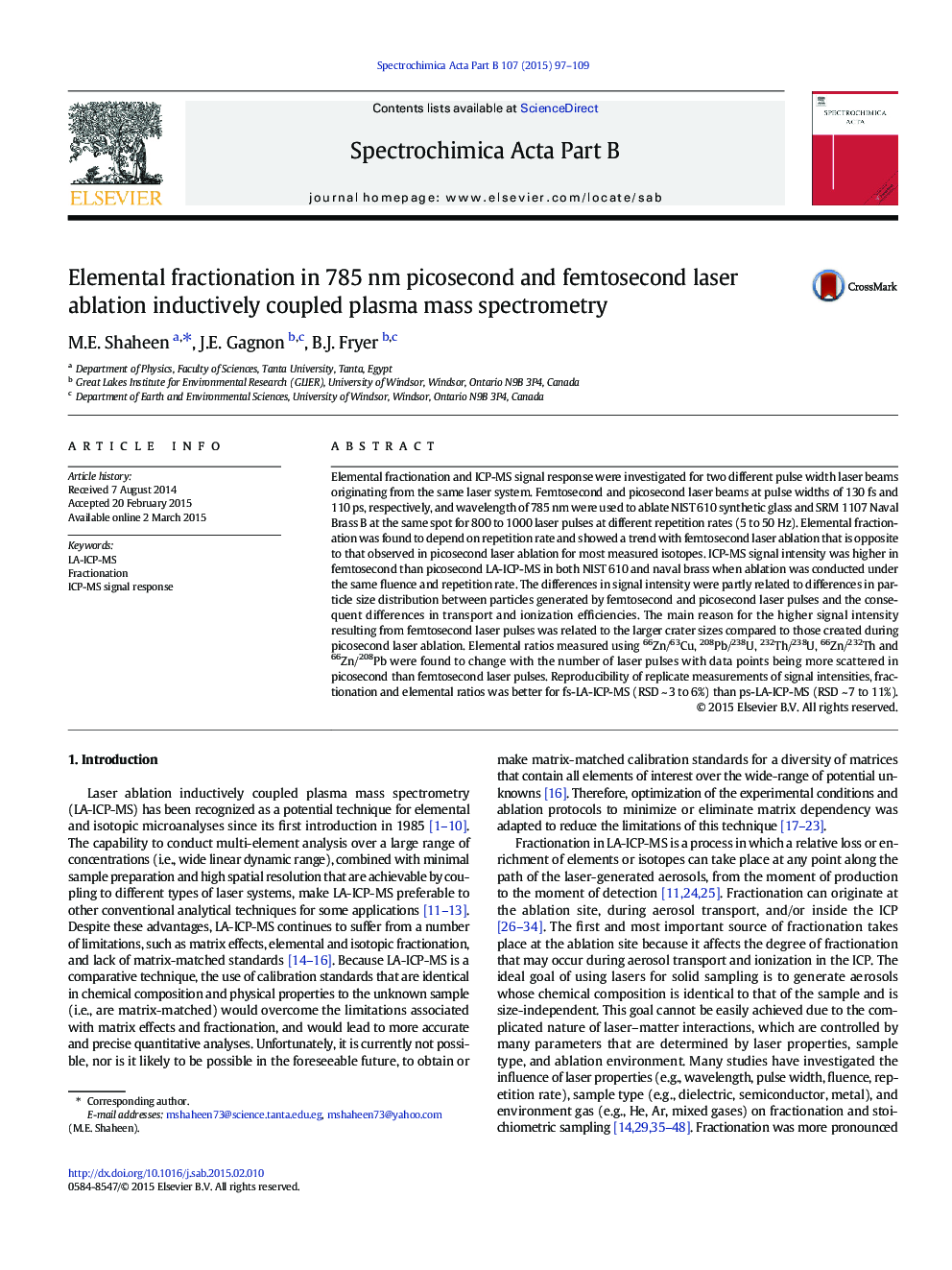| Article ID | Journal | Published Year | Pages | File Type |
|---|---|---|---|---|
| 1239626 | Spectrochimica Acta Part B: Atomic Spectroscopy | 2015 | 13 Pages |
•Fractionation and ICP-MS signal response were investigated for two different pulse widths using NIST 610 and Naval Brass.•Dependence of fractionation indices on repetition rate and pulse width.•Higher ablation rate was observed in picosecond compared to femtosecond laser ablation of NIST 610 and Brass.•Formation of a secondary peak was observed during fs-LA-ICP-MS and was related to self-focusing and changes in ablation behaviour inside the crater.•SEM pictures indicated that femtosecond laser pulses produce smaller particles than picosecond laser pulses.
Elemental fractionation and ICP-MS signal response were investigated for two different pulse width laser beams originating from the same laser system. Femtosecond and picosecond laser beams at pulse widths of 130 fs and 110 ps, respectively, and wavelength of 785 nm were used to ablate NIST 610 synthetic glass and SRM 1107 Naval Brass B at the same spot for 800 to 1000 laser pulses at different repetition rates (5 to 50 Hz). Elemental fractionation was found to depend on repetition rate and showed a trend with femtosecond laser ablation that is opposite to that observed in picosecond laser ablation for most measured isotopes. ICP-MS signal intensity was higher in femtosecond than picosecond LA-ICP-MS in both NIST 610 and naval brass when ablation was conducted under the same fluence and repetition rate. The differences in signal intensity were partly related to differences in particle size distribution between particles generated by femtosecond and picosecond laser pulses and the consequent differences in transport and ionization efficiencies. The main reason for the higher signal intensity resulting from femtosecond laser pulses was related to the larger crater sizes compared to those created during picosecond laser ablation. Elemental ratios measured using 66Zn/63Cu, 208Pb/238U, 232Th/238U, 66Zn/232Th and 66Zn/208Pb were found to change with the number of laser pulses with data points being more scattered in picosecond than femtosecond laser pulses. Reproducibility of replicate measurements of signal intensities, fractionation and elemental ratios was better for fs-LA-ICP-MS (RSD ~ 3 to 6%) than ps-LA-ICP-MS (RSD ~ 7 to 11%).
